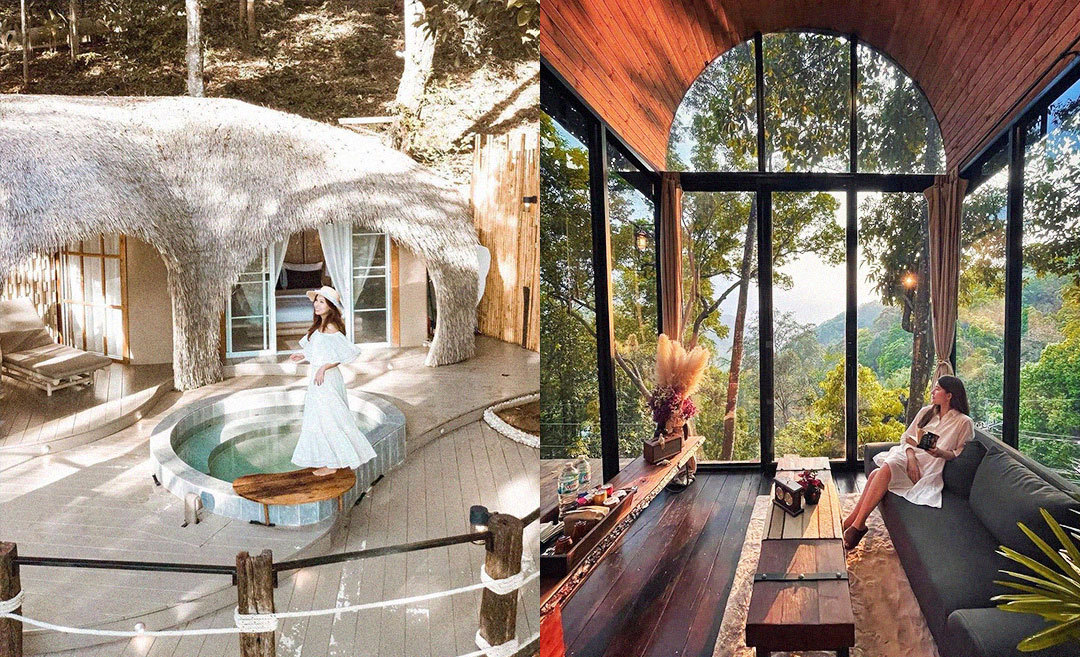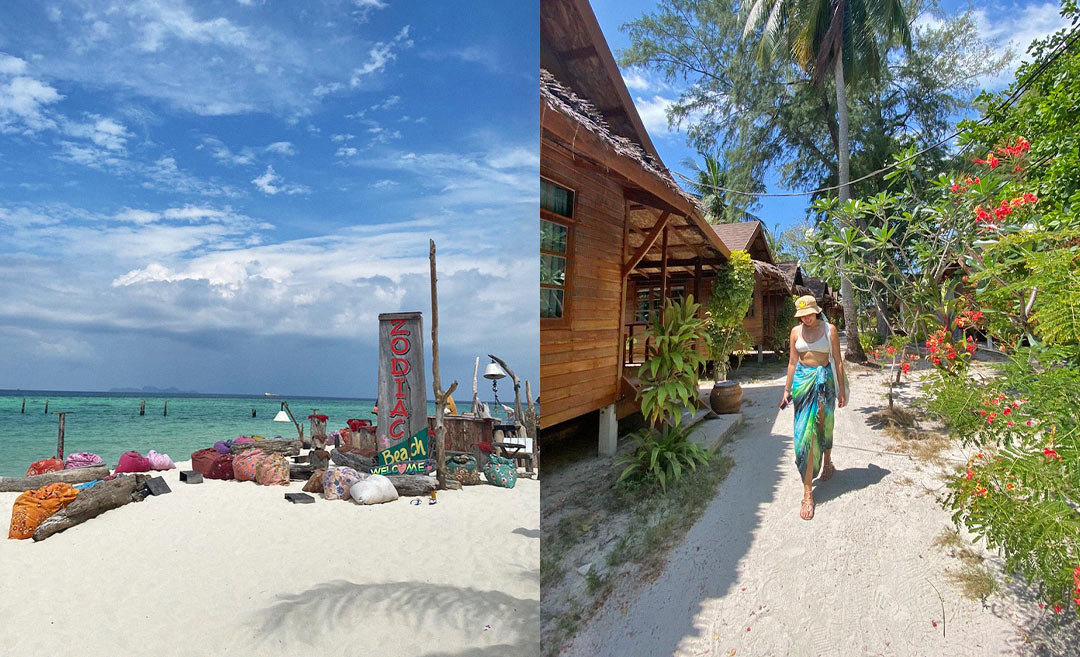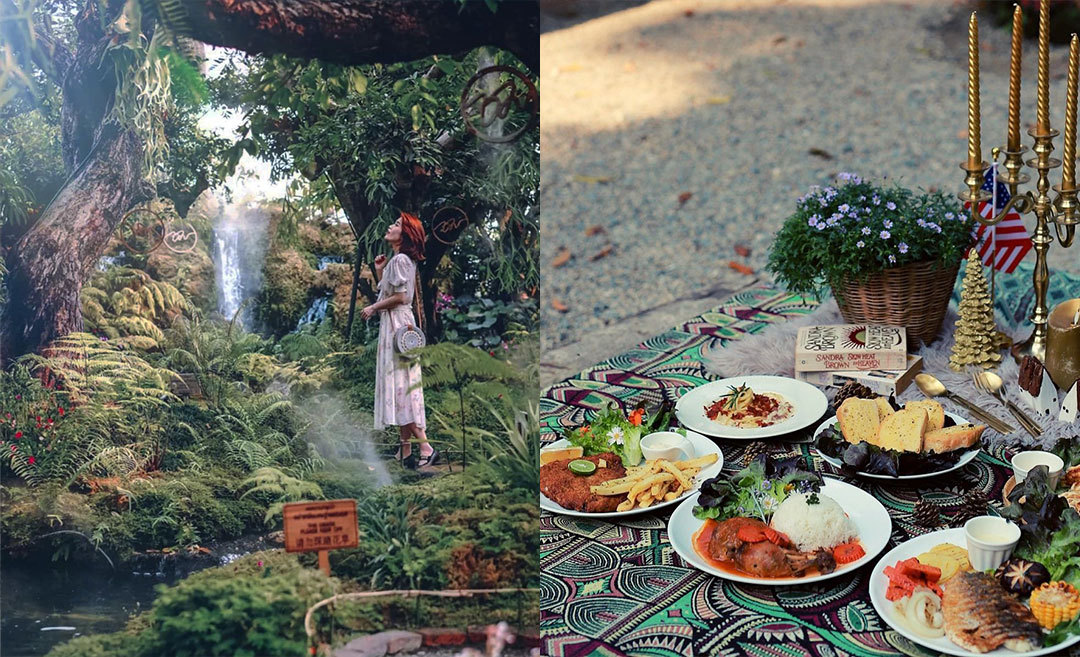Thailand is a country that I thought I knew reasonably well, that is until I recently took a few days of rest and recreation in what is known as the Isan region. The northeast of Thailand is less visited than most other parts of the kingdom, but for those seeking something different in a destination where life moves at an unhurried pace, the Tohsang Heritage Khongjiam Resort in Ubon Ratchathani could just be the place.
Getting to this hidden gem
Many parts of Thailand are easy to access, with direct flights to several international airports. However, ease of access generally means crowded destinations, so if you want to get off the well-trodden tourist path, you need to travel longer and further. Therefore, travelling to Ubon Ratchathani requires two AirAsia flights via Bangkok’s Don Mueang Airport.
This meant a morning departure to Bangkok for an early afternoon arrival at Tohsang Heritage Khongjiam Resort on the banks of the Mekong River, just to the east of Ubon Ratchathani. I also noted with interest that while the Ubon Ratchathani airport is international in name, no flights from overseas have touched down here just yet.
Perched beside the Mekong River, the resort overlooks Lao PDR (Laos), where small farms with rolling hills as a backdrop create a welcoming vista. It wasn’t long before I was relaxing in the resort pool.
Relaxing activities at Tohsang Heritage Khongjiam Resort
After cooling off, I began to examine the list of recreational possibilities in and around the resort. I was well aware of several activities along the river and in a nearby national park, which were the reasons I had chosen this part of Thailand for my holiday.
The eager staff rattled off a series of activities, including yoga in the gardens, cooking with the chef, and visiting the adjoining cotton village. On my first day, I simply relaxed by the pool, made the most of my deluxe room facilities, and dined on some delicious river fish at the Sunset Deck Restaurant.

The resort can arrange for yoga classes, and while my body is not as nimble as it once was, I enjoyed going through the motions at an early morning class overlooking the Mekong River. Later in my stay, I visited the resort spa for an energetic Thai massage that put a few ligaments and muscles back where they were supposed to be.
After a slow and relaxed breakfast, I joined the chef in visiting the small local market to purchase fresh supplies for the restaurant, including fresh ingredients for the classic Isan dish, som tam. We set off for the short drive to Khong Chiam village at the confluence of the Mun and Mekong Rivers. Som tam is a spicy green papaya salad that also includes long beans, tomatoes, chilli, fish sauce, garlic, dried shrimp, and peanuts that are pounded together. The spiciness depends on how many chillies are added.
The market was typical of a small village, with wet and dry sections. All the traders were very friendly, and purchasing the supplies was effortless. We returned to the resort and prepared the som tam, which was eagerly devoured for lunch. The chef also mentioned that staff could arrange a traditional palang dinner of local treats served on a low round table with cushioned seating.
Interactive afternoon at Tohsang Cotton Village
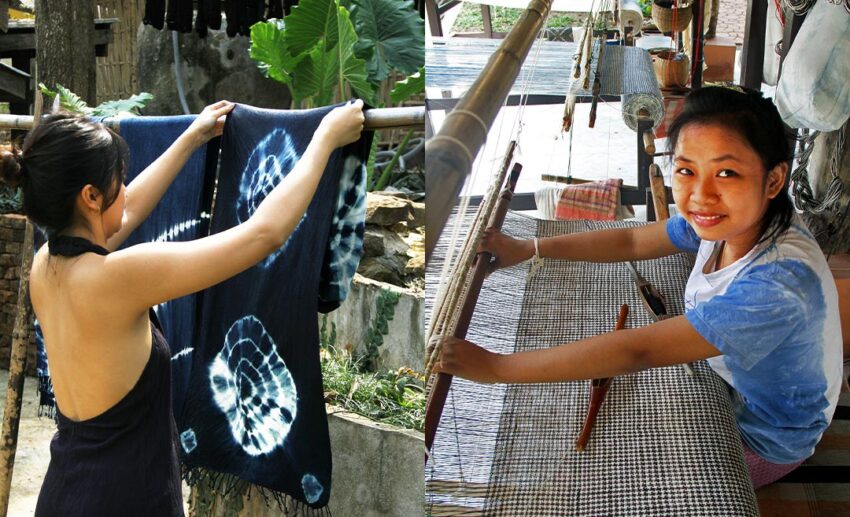
The adjoining Tohsang Cotton Village, operated by the resort, forms an important part of the property. Not only does it employ local villagers, especially women, who produce traditional Isan fabrics, but it also perpetuates an ancient craft threatened by cheap, synthetic, machine-made, imported fabrics.
I discovered that, after the river waters recede at the end of the rainy season, cotton is planted along the floodplains in soil enriched by nutrients from the annual flooding. I joined a small class to learn about Isan tie-dyeing techniques.
I spent a very educational and interactive afternoon learning the technique and dyeing a cotton shawl with locally sourced indigo dye.
The indigo pigment is obtained from the leaves of a plant, and all the other dyes used here are natural, so the colours are subdued and not as bright as artificial chemical dyes.
Sam Phan Bok: It’s a Grand Canyon!

The staff arranged for me to visit Thailand’s ‘Grand Canyon’ or Sam Phan Bok, located along the Mekong River, an hour’s drive north of the resort. Translated as 3,000 holes, the name refers to the ponds and holes sculpted into the pink sandstone that forms the bedrock of the mighty Mekong River.
It was well into the dry season, which is the best time to visit Sam Phan Bok. In the wet season, these rocks and pools disappear under the waters of the Mekong. I was quite staggered by the difference in the height of the Mekong during the seasons, as my guide indicated how high the wet seasons rose, and it was tens of metres.

However, it is a sight to behold in the dry season, and while it’s not of the scale of the Grand Canyon in Arizona, USA, the formations are most impressive and Instagram-worthy. A visit here can be combined with a river cruise, but this isn’t essential, as the rock formations are the star attraction. Plan your visit for late in the day, when the low afternoon light is best for photographs.
There were some in my group who couldn’t resist the temptation for some yoga poses and photos on the rock formations.
Mesmerising sunrise at Pha Taem National Park
After a few days at Tohsang Resort, I realised that rising early in the morning and going to bed early was part of the daily routine here. I was fine with this, as the sun rose early, and the evenings were quiet and relaxing in the near-silent river setting.
So, the next morning, I set off to Pha Taem National Park in the pre-dawn darkness to admire its many features, including the sunrise over the Mekong, deciduous forests, and some ancient cave paintings.
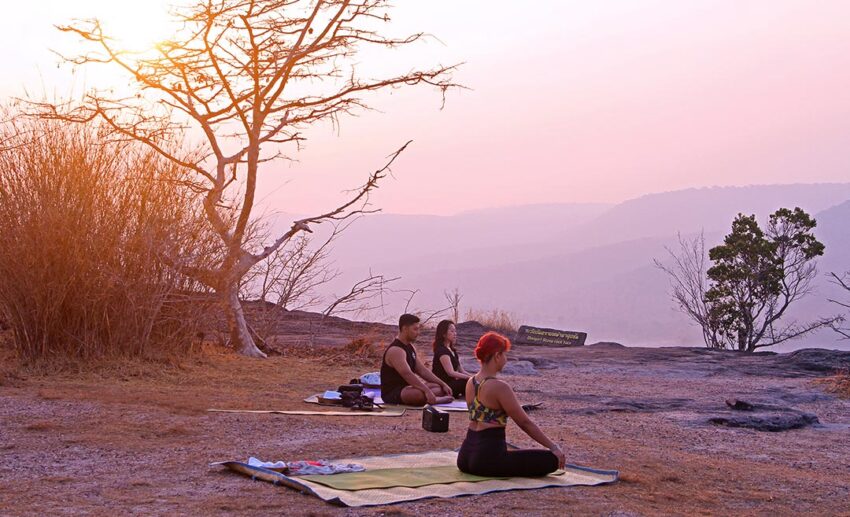
The sunrise site within the park is located high above the floodplain, and it was worth the wait as the bright orange sun rose above the rural setting in Laos on the other side of the river.
Timing is important, and this means arriving in the darkness, obtaining a front-row position along the precipitous cliff, and waiting patiently for nature to turn on a spectacular light show.

While the sun’s rays were glowing, it was the cave painting site that was most impressive for several reasons. The Pha Kham site, immediately below the steep cliff face, extends over 180 metres and dates back several thousand years. While the forces of water and wind erosion have taken their toll on the stencils, budding archaeologists will be fascinated by several series of stencils along the cliff face.
The hundreds of black, red, and white ochre stencils of riverine features like river turtles, stingrays, elephants, catfish, and fishing traps provide a unique insight into what life was like here over 3,000 years ago.
The glowing tiles of Wat Sirindhorn Wararam
On my last afternoon, a trip was organised just before dusk to Wat Sirindhorn Wararam, overlooking the waters of Sirindhorn Dam. We arrived before sunset because the beauty of this Buddhist temple is that fluorescent tiles have been placed on the concourse around it, and they glow in the dark. This, too, was the first time I saw a crowd on any day of my visit, as the temple is very popular with photographers.

Isan and the Tohsang Resort appeal for many reasons, especially to those seeking an international-standard property with access to exciting and less-visited attractions. The relative isolation of the resort ensures that it and Ubon Ratchathani Province aren’t overrun with tourists. I enjoyed its peace and quiet, but also because there were many activities I could get involved in. I could have even crossed into Pakse in neighbouring Laos had I the time.
Getting to Isan
Visitors need to fly to Bangkok and then take a domestic flight on AirAsia to Ubon Ratchathani, followed by an hour-long van transfer to Tohsang Heritage Khongjiam Resort.
All images are by the author, David Bowden.


